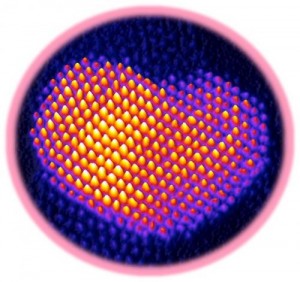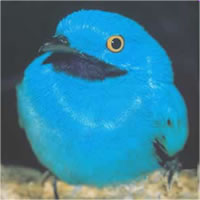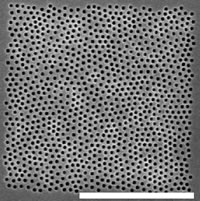Nancy Owano’s Sept. 21, 2012 phy.org article on a study about gender bias (early publication Sept. 17, 2012 in the Proceedings of the National Academy of Sciences) describes a situation that can be summed up with this saying ‘we women eat our own’.
The Yale University researchers developed applications for a supposed position in a science faculty and had faculty members assess the applicants’ paper submissions. From Owano’s article,
Applications were all identical except for the male names and female names. Even though the male and female name applications were identical in competencies, the female student was less likely to be hired, being viewed as less competent and desirable as a new-hire.
Results further showed the faculty members chose higher starting salaries and more career mentoring for applicants with male names.
Interestingly, it made no difference on hiring decisions as to whether the faculty member was male or female. Bias was just as likely to occur at the hands of a female as well as male faculty member.
I tracked down the paper (which is open access), Science faculty’s subtle gender biases favor male students by Corinne A. Moss-Racusin, John F. Dovidio, Victoria L. Bescroll, Mark J. Graham, and Jo Handelsman and found some figures in a table which I can’t reproduce here but suggest the saying ‘we women eat their own’ isn’t far off the mark. In it, you’ll see that while women faculty members will offer less to both genders, they offer significantly less to female applicants.
For a male applicant, here’s the salary offer,
Male Faculty Female Faculty
30,520.82 29, 333.33
For a female applicant, here’s the salary offer,
Male Faculty Female Faculty
27,111.11 25,000.00
To sum this up, the men offered approximately $3000 (9.25%) less to female applicants while the women offered approximately $4000 (14.6%) less. It’s uncomfortable to admit that women may be just as much or even more at fault as men where gender bias is concerned. However, it is necessary if the situation is ever going to change.
The Sept. 24, 2012 news release from Yale University features a quote from the lead author (Note: I have removed a link),
Yale University researchers asked 127 scientists to review a job application of identically qualified male and female students and found that the faculty members – both men and women – consistently scored a male candidate higher on a number of criteria such as competency and were more likely to hire the male. The result came as no surprise to Jo Handelsman, professor of molecular, cellular, and developmental biology (MCDB), a leading microbiologist, and national expert on science education. She is the lead author of the study scheduled to be published the week of Sept. 24 in the Proceedings of the National Academy of Sciences.
“Whenever I give a talk that mentions past findings of implicit gender bias in hiring, inevitably a scientist will say that can’t happen in our labs because we are trained to be objective. I had hoped that they were right,” said Handelsman, who is also a Howard Hughes Medical Institute Professor.
So Handelsman and Corinne A. Moss-Racusin, a postdoctoral associate in MCDB and psychology, as well as colleagues in social psychology decided to test whether this bias among researchers might help explain why fewer women than men have careers in science. They provided about 200 academic researchers with an application from a senior undergraduate student ostensibly applying for a job as lab manager. The faculty participants all received the same application, which was randomly assigned a male or female name. The faculty were asked to judge the applicants’ competency, how much they should be paid, and whether or not they would be willing to mentor the student.
In the end, scientists responded no differently than other groups tested for bias. Both men and women science faculty were more likely to hire the male, ranked him higher in competency, and were willing to pay him $4000 more than the woman. [emphasis mine] They were also more willing to provide mentoring to the male than to the female candidate.
I highlighted the sentence in the excerpt since the portion about the salary difference somewhat contradicts my own reading of the information in the study. If you are female, you will still be offered less money by male faculty but the percentage (9% less) is an improvement over the 14% differential offered by female faculty. I do appreciate that these numbers have been crunched together and there will be individual differences, as well as, outliers but this finding certainly confirms ‘folk wisdom’ and points to the difficulty of facing uncomfortable truths for even the researchers and their sponsoring institutions.
ETA Sept. 25, 2012: There have been some comments about the research and the methodology on Uta Frith’s Science&shopping website:
Research on gender bias
Comments by David Attwell on Moss-Racusin et al. ‘Science faculty’s subtle gender biases’
Comments on comments by Virginia Valian
Comments on comments by Dorothy Bishop
H/T to Jenny Rohn for the information about Uta Frith’s coverage of the issue which I found in Rohn’s Sept. 25, 2012 posting about women, science, and bias (she mentions this recent research from Yale but in the context of other research and broader issues of gender bias in the sciences) for the Guardian science blogs.
ETA Sept. 26, 2012: The Canadian Broadcasting Corporation’s As It Happens radio show features an interview with Corinne A. Moss-Racusin about the paper in their Sept. 25, 2012 broadcast. Click here and scroll down to the Sept. 25, 2012 entry and keep scrolling until you see the speaker icon and Listen, click on Listen and the popup menu will appear. Scroll down to part 3 and click again (it’s the second interview). There’s also a Sept. 25, 2012 podcast in the left column of today’s front page screen of As It Happens, which I did not test.


